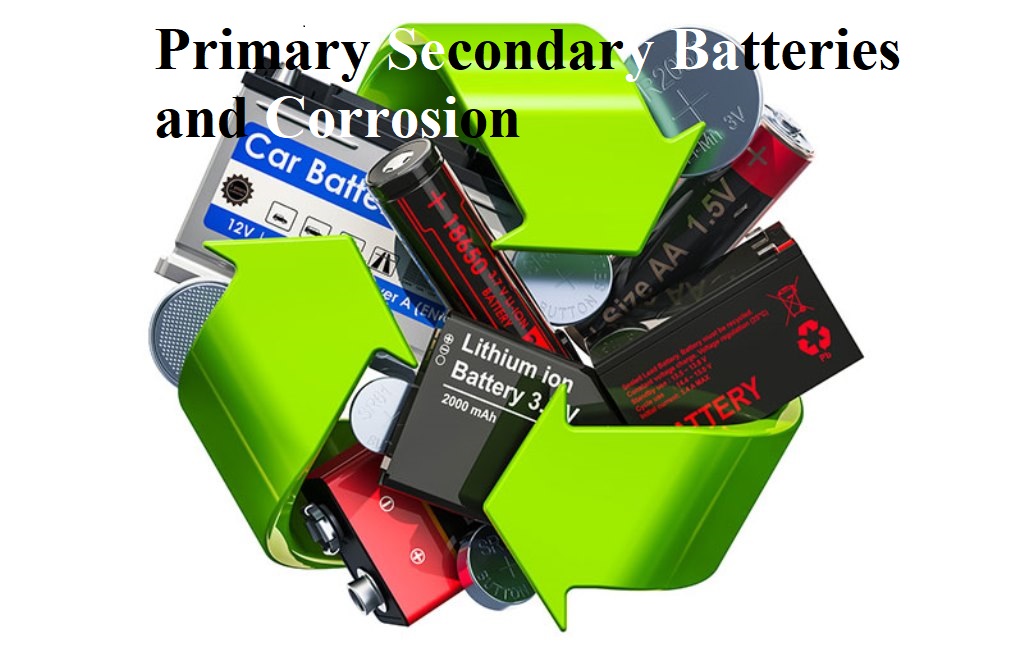Primary Secondary Batteries and Corrosion
Batteries: A battery is basically a galvanic cell in which the chemical energy of a redox reaction is converted to electrical energy. They are of mainly 2 types – primary batteries and secondary batteries.
Primary batteries: Here the reaction occurs only once and after use over a period of time, they become dead and cannot be reused. E.g. Dry cell, mercury button cell, etc. (Primary cells cannot be recharged and reused).
(i) Dry Cell (ii) Mercury Cell


Primary Secondary Batteries and Corrosion
Secondary cells: A secondary cell can be recharged and reused again and again. Here the cell reaction can be reversed by passing a current through it in the opposite direction. The most important secondary cell is the lead storage cell, which is used in automobiles and investors.
Lead – Storage Battery

Fuel Cells: These are galvanic cells that convert the energy of the combustion of fuels like hydrogen, methane, methanol, etc. directly into electrical energy.
One example of a fuel cell is the Hydrogen – Oxygen fuel cell, which is used in the Apollo space programme. Here hydrogen and oxygen are bubbled through porous carbon electrodes into a concentrated aqueous sodium hydroxide solution. To increase the rate of electrode reactions, catalysts like finely divided platinum or palladium metal are filled into the electrodes.

Primary Secondary Batteries and Corrosion
Corrosion: It is a process of eating away of metals on their surfaces, it is an unwanted process as it results in a loss of mass of metals. In this process, metal surface reacts with atmospheric oxygen to form a layer of oxide. It is an electrochemical reaction.
The most familiar example of corrosion is the rusting of iron. It occurs in presence of water and air. It is a redox reaction. At a particular spot of the metal, oxidation takes place and that spot behaves as an anode. Here Fe is oxidized to Fe2+. 2 Fe (s)→2 Fe2+ + 4 e–
Electrons released at the anodic spot move through the metal and go to another spot on the metal and reduce oxygen in presence of H+. This spot behaves as a cathode. The reaction taking place at this spot is:
The overall reaction is: 2Fe(s)+O2(g) + 4H+(aq) → 2Fe2 +(aq)+ 2 H2O (l )
The ferrous ions (Fe2+) are further oxidized to ferric ions (Fe3+) and finally to hydrated ferric oxide (Fe2O3. x H2O), which is called rust.
Methods to prevent corrosion:
(i) By Allergy Medicines With Steroids May Hamper Response to Coronavirus dianabol purchase how pharma cash colors operation warp speed quest to defeat covid-19 coating the metal surface with paint, varnish, etc.
(ii) By coating the metal surface with another electropositive metal like zinc, magnesium, etc. The coating of metal with zinc is called galvanization and the resulting iron is called galvanized iron.
(iii) By coating with an anti-rust solution.
(iv) An electrochemical method is to provide a sacrificial electrode of another metal (like Mg, Zn, etc.) which corrodes itself but saves the object (sacrificial protection)



